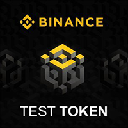-
 Bitcoin
Bitcoin $96,803.6177
2.81% -
 Ethereum
Ethereum $1,828.5581
1.68% -
 Tether USDt
Tether USDt $0.9999
0.01% -
 XRP
XRP $2.1468
2.05% -
 BNB
BNB $602.6394
0.89% -
 Solana
Solana $147.5968
2.36% -
 USDC
USDC $1.0001
0.00% -
 Dogecoin
Dogecoin $0.1716
2.33% -
 Cardano
Cardano $0.6808
3.84% -
 TRON
TRON $0.2444
-1.25% -
 Sui
Sui $3.3886
2.40% -
 Chainlink
Chainlink $13.9419
3.67% -
 Avalanche
Avalanche $19.8957
1.91% -
 Stellar
Stellar $0.2615
2.17% -
 UNUS SED LEO
UNUS SED LEO $8.7299
0.81% -
 Shiba Inu
Shiba Inu $0.0...01278
2.17% -
 Toncoin
Toncoin $3.0073
0.91% -
 Bitcoin Cash
Bitcoin Cash $375.7472
6.80% -
 Hedera
Hedera $0.1762
2.34% -
 Litecoin
Litecoin $92.0081
12.02% -
 Hyperliquid
Hyperliquid $20.8341
4.01% -
 Polkadot
Polkadot $3.9623
2.13% -
 Dai
Dai $1.0001
0.02% -
 Monero
Monero $284.6139
3.64% -
 Bitget Token
Bitget Token $4.3030
0.16% -
 Ethena USDe
Ethena USDe $1.0004
0.01% -
 Pi
Pi $0.5803
-0.99% -
 Pepe
Pepe $0.0...08024
2.72% -
 Bittensor
Bittensor $379.8013
3.26% -
 Uniswap
Uniswap $4.9649
1.30%
What is the blockchain technology of Scroll (SCR) coin?
Scroll's Layer-2 architecture addresses blockchain scalability by separating transaction execution from the main blockchain, utilizing zk-SNARKS for secure and efficient off-chain processing.
Dec 08, 2024 at 10:48 am
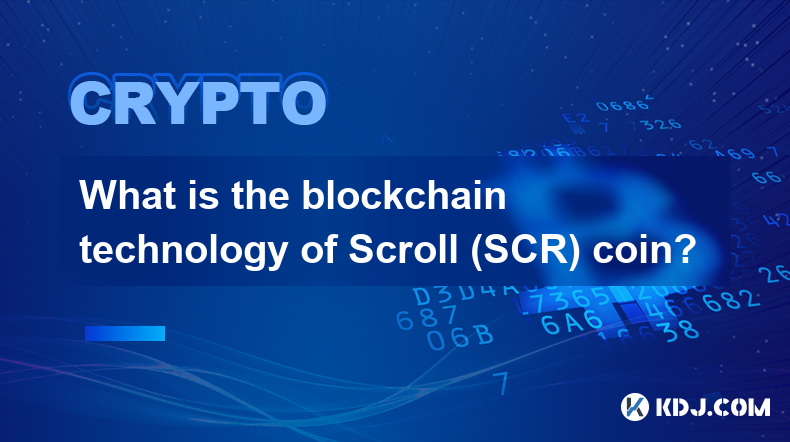
Understanding the Blockchain Technology of Scroll (SCR) Coin: A Technical Deep Dive
Introduction:
Scroll (SCR) coin stands out in the blockchain landscape with its distinctive architecture and focus on scalability and cost-efficiency. Unlike other blockchain projects, Scroll employs a unique Layer-2 scaling solution to overcome the limitations of traditional Layer-1 blockchains. This article delves into the technical details of Scroll's blockchain technology, elucidating its components, functionality, and benefits.
1. Overview of Scroll's Layer-2 Architecture
- Off-Chain Execution: At the heart of Scroll's design lies its Layer-2 architecture, which separates the execution of transactions from the main blockchain. Transactions are processed off-chain on a distinct execution layer to alleviate the computational burden on the Layer-1 network.
- Data Availability on Main Chain: While transaction execution occurs off-chain, the data associated with these transactions is stored and secured on the main blockchain. This ensures that the transaction history remains transparent and verifiable, preventing malicious actors from manipulating or altering the data.
2. Key Components of the Scroll Blockchain
- zk-SNARKS: Scroll utilizes zero-knowledge Succinct Non-Interactive Arguments of Knowledge (zk-SNARKS) as a critical component of its consensus mechanism. zk-SNARKS allow participants to prove the validity of their transactions without revealing the transaction details themselves. This maintains privacy while enabling efficient verification of transactions.
- Rollups: Transactions processed on the off-chain execution layer are collectively batched into rollups. These rollups are periodically submitted to the main blockchain by a designated entity known as the Sequencer. The Sequencer combines the transactions within each rollup and generates a zk-SNARK for the aggregate transaction data.
3. Advantages of Scroll's Blockchain Technology
- Enhanced Scalability: By offloading transaction execution to the Layer-2 network, Scroll significantly enhances blockchain scalability. The off-chain execution layer can handle a much higher volume of transactions than the main blockchain, reducing congestion and increasing transaction throughput.
- Reduced Costs: Off-chain transaction execution also translates into lower transaction fees. Developers can build applications and users can engage with the network without incurring exorbitant gas fees, fostering wider accessibility and usage.
- Preservation of Decentralization: Despite operating as a Layer-2 solution, Scroll maintains a decentralized network structure. The Sequencer is not a single point of failure, and any party can verify the validity of rollups using the zk-SNARKs. This ensures the integrity and trustworthiness of the network.
4. Security Features of Scroll's Blockchain
- Provable Security: Scroll's utilization of zk-SNARKS provides a high level of provable security. The mathematical foundations of zk-SNARKS guarantee that transactions are valid without revealing sensitive information. This enhanced security safeguards against fraud and malicious activities.
- Data Availability Guarantees: Scroll employs a fault-tolerant mechanism to ensure the availability of transaction data on the main blockchain. Even in the event of network disruptions, the data remains accessible, maintaining the immutability and verifiability of the transaction history.
5. Potential Applications of Scroll's Blockchain
- Data Storage and Management: Scroll's scalable and cost-efficient architecture makes it suitable for storing and managing large datasets. Applications, such as decentralized databases and document storage systems, can leverage Scroll's technology to enhance data integrity and accessibility.
- Decentralized Finance (DeFi): The low transaction costs and enhanced scalability of Scroll align well with the requirements of DeFi applications. Developers can build efficient and user-friendly DeFi protocols, such as lending platforms, exchanges, and liquidity pools, on Scroll's blockchain.
- Supply Chain Management: Scroll's capabilities in tracking and verifying transactions can be applied to supply chain management systems. By leveraging Scroll's blockchain, industries can establish transparent and verifiable供应 chains, reducing fraud and improving supply chain efficiency.
Disclaimer:info@kdj.com
The information provided is not trading advice. kdj.com does not assume any responsibility for any investments made based on the information provided in this article. Cryptocurrencies are highly volatile and it is highly recommended that you invest with caution after thorough research!
If you believe that the content used on this website infringes your copyright, please contact us immediately (info@kdj.com) and we will delete it promptly.
- Dogecoin (DOGE) Price Shows Signs of Recovery After a Week of Selling Pressure
- 2025-05-07 11:05:13
- The ups and downs of Jeffy Yu and Zerebro: from genius to turmoil
- 2025-05-07 11:05:13
- Dogecoin (DOGE) Price Struggles Under the $0.18 Resistance as Geopolitical Tension Rises. Here’s How DOGE Could React If It Matches 30% of US M1 Supply
- 2025-05-07 11:00:27
- Melania Trump's "Meme Coin" Got Dumped by Early Investors, Making Them Millions
- 2025-05-07 11:00:27
- Bitcoin (BTC) Head and Shoulders Pattern Could Be Forming, XRP (XRP) Drops Below 200-Day EMA
- 2025-05-07 10:55:12
- RCO Finance Is Drawing More Users Than Dogecoin and Shiba Inu Combined, Here’s Why
- 2025-05-07 10:55:12
Related knowledge
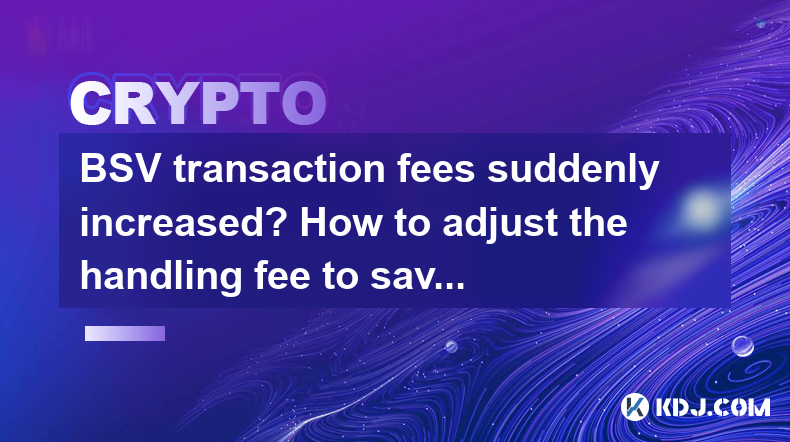
BSV transaction fees suddenly increased? How to adjust the handling fee to save costs?
May 02,2025 at 06:42am
Understanding BSV Transaction FeesBSV (Bitcoin SV) aims to fulfill the original vision of Bitcoin as a peer-to-peer electronic cash system. One of the key elements in this system is the transaction fee, which compensates miners for including transactions in the blockchain. Recently, users have noticed a sudden increase in BSV transaction fees, which can...
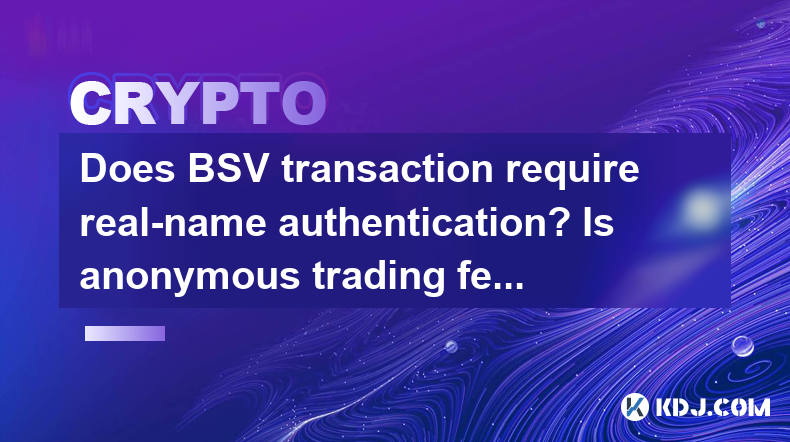
Does BSV transaction require real-name authentication? Is anonymous trading feasible?
May 03,2025 at 03:14pm
The question of whether BSV (Bitcoin SV) transactions require real-name authentication and whether anonymous trading is feasible is a complex one, deeply intertwined with the broader dynamics of cryptocurrency regulations and blockchain technology. Let's delve into these aspects to provide a comprehensive understanding. Understanding BSV and Its Transac...
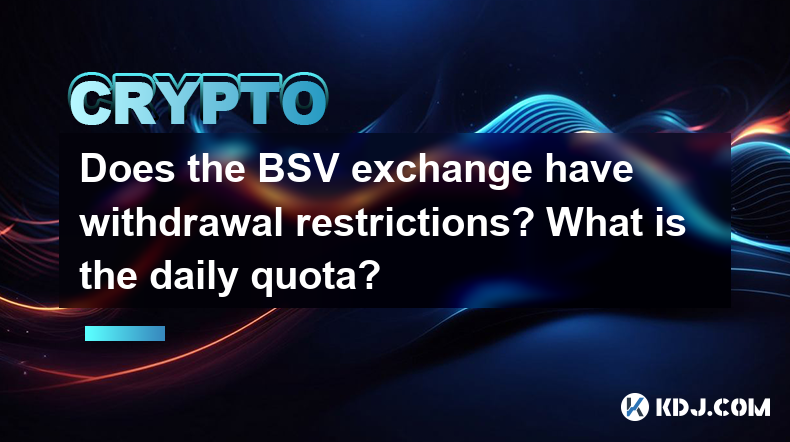
Does the BSV exchange have withdrawal restrictions? What is the daily quota?
May 07,2025 at 08:01am
The BSV (Bitcoin SV) exchange, like many other cryptocurrency platforms, implements various withdrawal restrictions and daily quotas to ensure the security and stability of the platform. Understanding these restrictions is crucial for users who frequently engage in transactions involving BSV. This article delves into the specifics of withdrawal restrict...
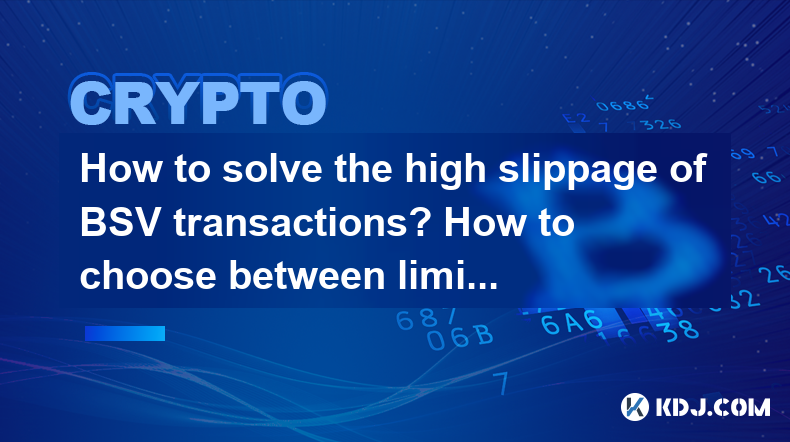
How to solve the high slippage of BSV transactions? How to choose between limit and market orders?
May 02,2025 at 09:01pm
High slippage can be a significant concern for traders dealing with Bitcoin SV (BSV) transactions. Slippage refers to the difference between the expected price of a trade and the price at which the trade is actually executed. This can occur in fast-moving markets or when there is low liquidity. To address this issue, understanding the mechanics of slipp...

What if BSV transactions are frozen? How to contact customer service to unblock the account?
May 05,2025 at 05:01am
When dealing with Bitcoin SV (BSV) transactions, encountering issues such as frozen transactions can be a stressful experience. This article will guide you through the process of understanding why BSV transactions might be frozen and how to contact customer service to unblock your account. We will cover the reasons behind frozen transactions, steps to t...
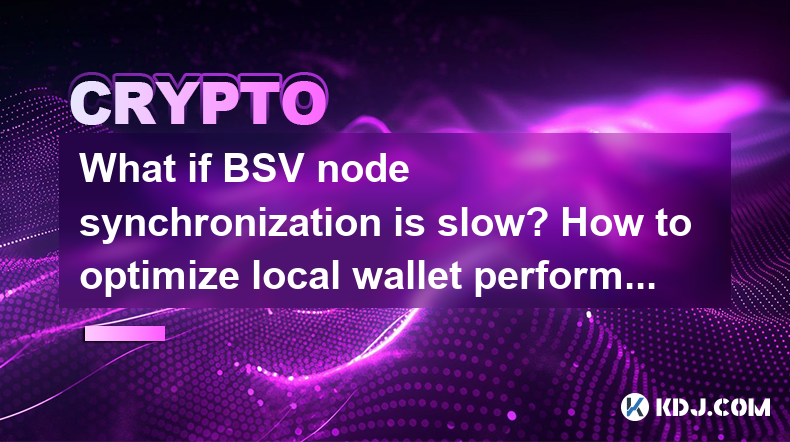
What if BSV node synchronization is slow? How to optimize local wallet performance?
May 03,2025 at 04:35pm
When dealing with BSV (Bitcoin SV) node synchronization and optimizing local wallet performance, it's crucial to understand the underlying issues and implement effective solutions. Slow synchronization and poor wallet performance can significantly hinder your experience with the BSV network. This article will delve into the reasons behind slow BSV node ...

BSV transaction fees suddenly increased? How to adjust the handling fee to save costs?
May 02,2025 at 06:42am
Understanding BSV Transaction FeesBSV (Bitcoin SV) aims to fulfill the original vision of Bitcoin as a peer-to-peer electronic cash system. One of the key elements in this system is the transaction fee, which compensates miners for including transactions in the blockchain. Recently, users have noticed a sudden increase in BSV transaction fees, which can...

Does BSV transaction require real-name authentication? Is anonymous trading feasible?
May 03,2025 at 03:14pm
The question of whether BSV (Bitcoin SV) transactions require real-name authentication and whether anonymous trading is feasible is a complex one, deeply intertwined with the broader dynamics of cryptocurrency regulations and blockchain technology. Let's delve into these aspects to provide a comprehensive understanding. Understanding BSV and Its Transac...

Does the BSV exchange have withdrawal restrictions? What is the daily quota?
May 07,2025 at 08:01am
The BSV (Bitcoin SV) exchange, like many other cryptocurrency platforms, implements various withdrawal restrictions and daily quotas to ensure the security and stability of the platform. Understanding these restrictions is crucial for users who frequently engage in transactions involving BSV. This article delves into the specifics of withdrawal restrict...

How to solve the high slippage of BSV transactions? How to choose between limit and market orders?
May 02,2025 at 09:01pm
High slippage can be a significant concern for traders dealing with Bitcoin SV (BSV) transactions. Slippage refers to the difference between the expected price of a trade and the price at which the trade is actually executed. This can occur in fast-moving markets or when there is low liquidity. To address this issue, understanding the mechanics of slipp...

What if BSV transactions are frozen? How to contact customer service to unblock the account?
May 05,2025 at 05:01am
When dealing with Bitcoin SV (BSV) transactions, encountering issues such as frozen transactions can be a stressful experience. This article will guide you through the process of understanding why BSV transactions might be frozen and how to contact customer service to unblock your account. We will cover the reasons behind frozen transactions, steps to t...

What if BSV node synchronization is slow? How to optimize local wallet performance?
May 03,2025 at 04:35pm
When dealing with BSV (Bitcoin SV) node synchronization and optimizing local wallet performance, it's crucial to understand the underlying issues and implement effective solutions. Slow synchronization and poor wallet performance can significantly hinder your experience with the BSV network. This article will delve into the reasons behind slow BSV node ...
See all articles
















































































